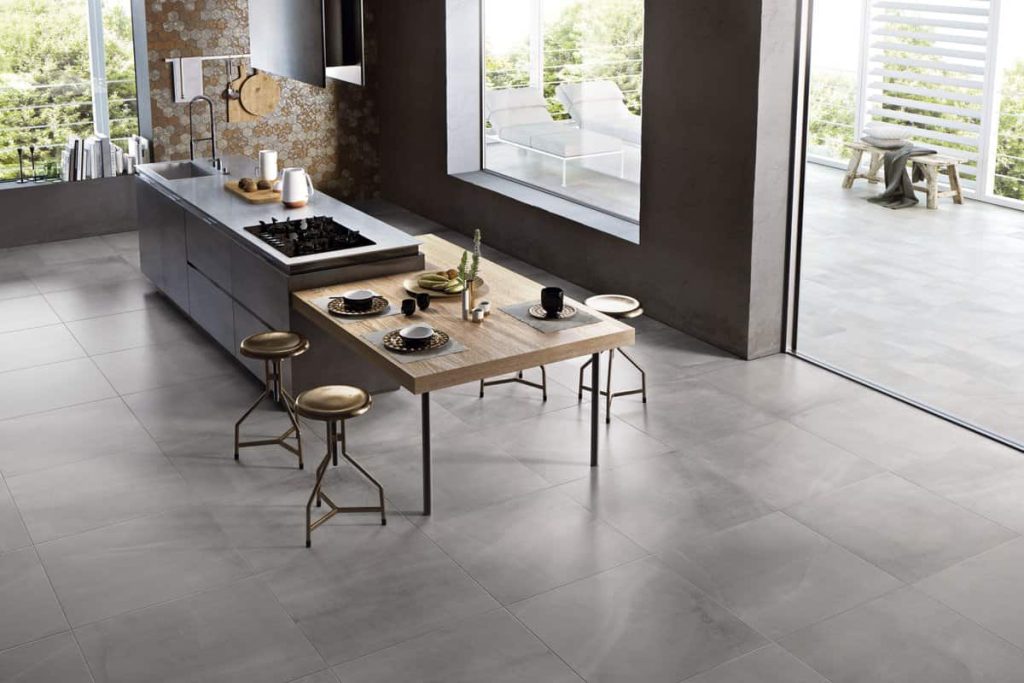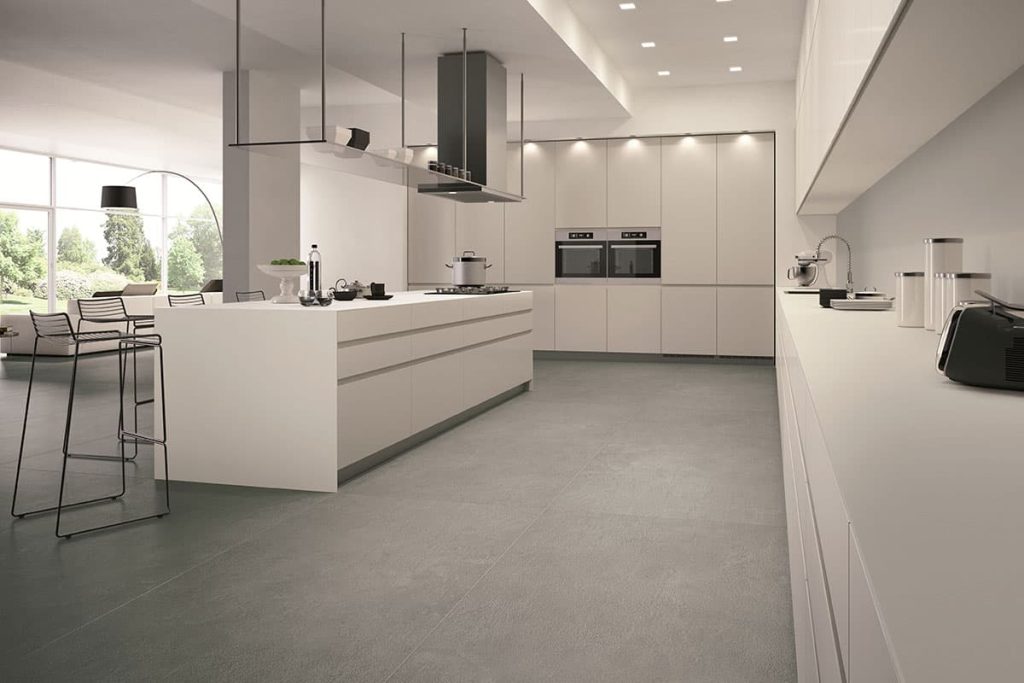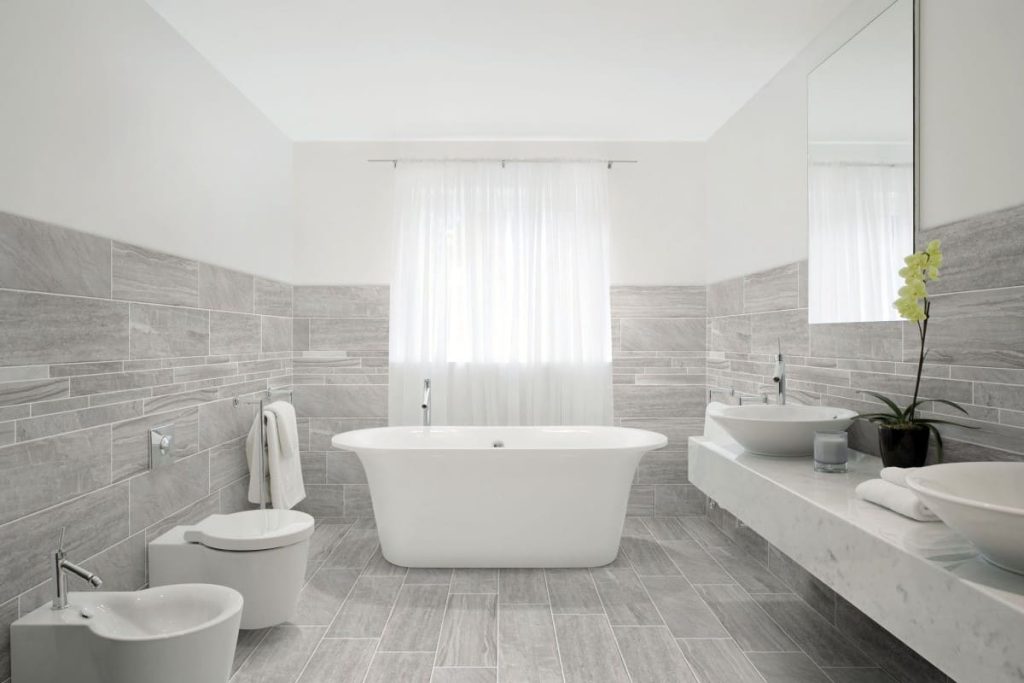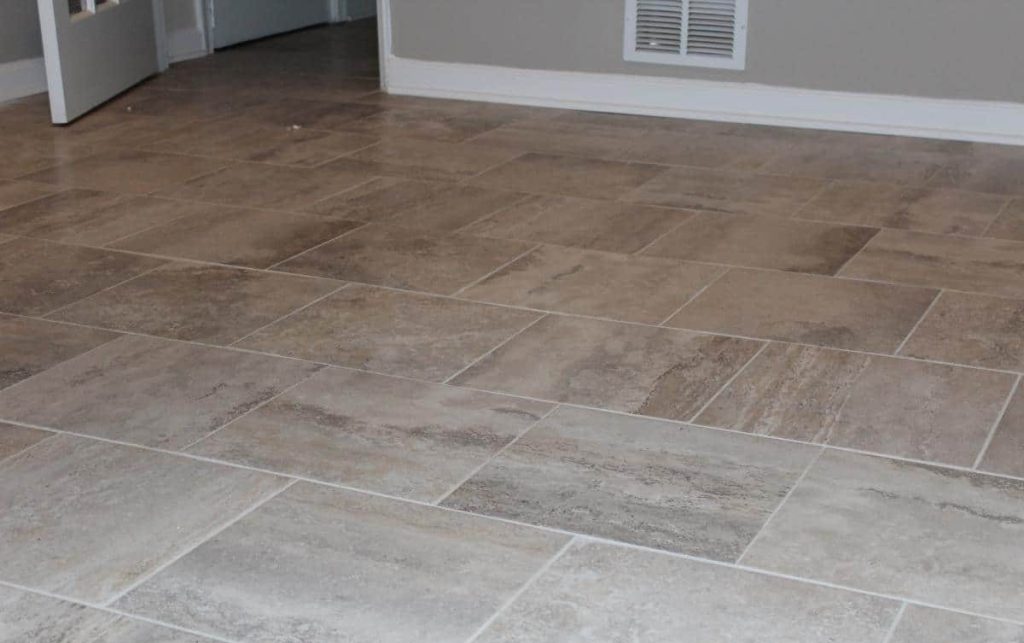In terms of the types of Chinese tiles versus ceramic tiles, there are no visible differences between the two at first sight. Ceramic and Chinese tiles vary because of their composition and manufacturing techniques.
Porcelain tiles are more durable than ceramic tiles, both made of clay and burned in a furnace. Water resistance and cost are the two main factors to consider the decision time between ceramics and ceramics. After you’ve used it, you can choose a style that suits your space and decide which types of tiles you want to use.
ceramic tiles
To produce porcelain tiles, a combination of treated clay and other natural materials are packed under high pressure and then baked at higher temperature in the furnace. After baking in a furnace, the porcelain tiles may remain unchanged or become stone, wood, concrete and other materials with the printing of the cut-off ink.
Ceramic tiles are often used in residential areas, while porcelain tiles are used in commercial settings due to their durability and resistance to breaking and wear and greater strain.
However, porcelain tiles are more difficult due to their strength and rigidity with standard instruments. A professional tile should cut and install these tiles in your home because they have specialized equipment.

Porcelain tiles often cost at least 60% more than ceramic tiles due to their more complicated materials and manufacturing method, which may be a major deciding factor when choosing between porcelain tiles and ceramic tiles.
Porcelain tiles are more expensive to purchase up front than ceramic tiles. And yet, they save you money in the long run because of their superior durability and inclination to last for many years.
Porcelain Floor Tiles Glaze: When choosing porcelain tiles, you may choose between a glazed or an unglazed finish. Porcelain tiles with glazes endure longer and are more stain-resistant. Unglazed porcelain tiles offer superior impact, abrasion, and slide resistance.
Because porcelain tiles (glazed or unglazed) have through-bodied pigment going throughout their thickness, any chips that may occur in a shattered piece will be less obvious due to the consistent color of the tile itself.
Porcelain tiles are very water-resistant, making them almost impenetrable to water damage, even after extended exposure. Porcelain tiles are an excellent alternative for kitchen, shower, and bathroom flooring due to their strong water resistance.
Since they won’t absorb water and shatter in freezing temperatures, some contemporary porcelain floor tiles are even frost-proof, which is very handy in harsher outdoor weather.
When comparing porcelain and ceramic tiles, porcelain floor tiles’ ease of cleaning makes them the best option for high-traffic areas like mudrooms, corridors, and living spaces.
Styles: Modern porcelain tiles’ usage of high-tech inkjet printing techniques during manufacture is one of its main advantages. Only a careful inspection would tell if the tiles weren’t printed to appear exactly like genuine wood or stone.
Because of this, you may choose porcelain tiles that mimic the upmarket and rich appearance of flooring materials like marble, travertine, wood, and even metal without the upkeep and expense.

Porcelain tiles for walls
Porcelain tiles are a good choice for cladding and walls, because they are more diverse than ceramic tiles in form and design.
Porcelain wall tile is ideal for customers with special tastes due to the variety of appearance, colors, patterns and sizes available, which are especially useful when developing a distinctive decor theme.
Generally, porcelain tiles are more pardonable than leakage and scratches, which are in areas where these things are likely to happen, such as the kitchen. Remember to keep one or two boxes of additional tiles until they are replaced at the next time.
Earthenware
Because of the lower temperature that ceramic tiles are burned in the furnace, they are less thick than Chinese tiles. Unfinished ceramic tiles should not be used in wet locations because they are more porous and have higher absorption rates.
Ceramic tiles are easier to access but less durable than the mud used to make Chinese tiles. Ceramic tiles are preferred for homes in warmer areas because they often have lower temperatures than Chinese tiles. However, it also suggests that they are colder in the winter.
Glaze for ceramic floor tiles: Ceramic tiles are made of a primary material covered with decorative glaze. Strong glazed finish may be personalized in a wide range of hues and designs. However, this means that each chip will exhibit the underlying natural color, which may turn dark.
Glazed-free ceramic tiles should be sealed to protect the surface of the liquids if they want to be used. The glazed-free surface is rough if the ceramic tile pattern contains promoted waves and features.

It is important to know that glazed ceramic floor tiles often have a softer surface than porcelain tiles, which may make them more enjoyable to walk, if you like to walk barefoot.
Water resistance: Ceramic floor tiles are used in less used places because they are less durable. Ceramic floor tiles are not the best choice for outdoor use because they are not both more brittle and are more prone to environmental damage due to higher absorption.
Ceramic tiles require cleaning and pouring more regularly than porcelain tiles, so keep it in mind when comparing two types of tiles.
Ceramic Tiles for Walls
Ceramic tiles are more durable than Chinese tiles, and they are a better choice for back parts and walls where there are no traffic. Ceramic tiles are available in many styles, from decorative to modern, often with textured surfaces.

The surface patches are benefitting much from the visual depth created by ceramic tiles due to their more artistic, more complex, and more diverse designs. Because of the low weight, they are easier to cut, which is great to do, you are looking for a cheap job to install, because you don’t need to pay a contractor on the front.
Due to its access, it is possible to create a speech space using ceramic tiles engraved on walls and floors. You should now be able to choose the type of tile that is ideal for your payment needs after better understanding of the benefits and disadvantages of ceramic tiles.
One of the oldest and most adaptable coatings of the floor and wall is available to the tiles. Both tiles are made today under the brand, and clay tiles that have been passed for hundreds of years are also available.
Most people use ceramic and porcelain tiles in their homes, two different types of clay tiles. Although both synthetic and made from clay, they have different materials in appearance, durability, and production process. Below, we offer a comparison of these two so you can make a conscious decision to use your next project.










Your comment submitted.